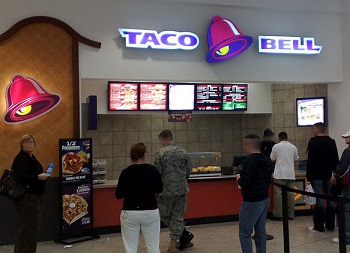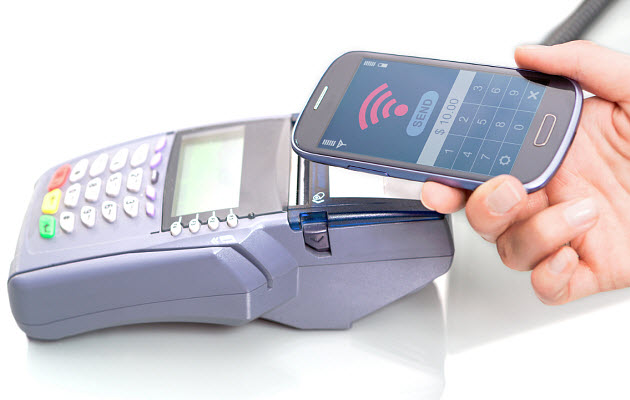The goal is to ensure that people will be swayed and will want to buy from the breakfast menu.
Taco Bell knows that the millennial generation is its primary target market, and the fast food company is now tracking its cell phone toting customers in order to be able to best design their mobile ads strategy.
The idea is to reach these mobile device users the moment they get up in the morning to make them crave breakfast.
Not just any breakfast, of course. The mobile ads are a part of a campaign to help to promote the new breakfast menu. Earlier this month, Taco Bell rolled out 10 new breakfast items with the highly affordable price tag of only $1 each. This is the latest step in encouraging people to think of their quick service restaurants for their first meal of the day – an effort that began back in 2014.
To make sure these mobile ads go out at the perfect moment, Taco Bell tracks customer phone activity and data.
 According to the Taco Bell vice president of media and brand partnerships, Juliete Corsinita, “We’ve honed our media skills over the last couple of years.” As a part of this effort, the company is also working with Aki, a mobile advertising firm that attempts to “target mobile moments”.
According to the Taco Bell vice president of media and brand partnerships, Juliete Corsinita, “We’ve honed our media skills over the last couple of years.” As a part of this effort, the company is also working with Aki, a mobile advertising firm that attempts to “target mobile moments”.
The way Aki works is that it starts by tracking the phone activity and data of a mobile device user. This allows it to target its smartphone ads based on exceptionally specific habits and behaviors such as knowing which apps are used by a smartphone user first thing in the morning. It can learn the times of day when someone looks at a breakfast recipe as well as the favorite news apps for catching up on what’s going on in the world before the day begins.
Taco Bell has also been tinkering with the Wishbone mobile app that makes it possible for users to ask their followers to complete mini-polls that have participants choosing their favorite images. When the app is opened, they’re asked which between two pictures is the best. Starting earlier this month, one of these efforts in mobile ads in disguise has asked people to choose between a piece of flat bread or the new flatbread quesadilla sold at the restaurants.
Paytm will be working to expand its offline merchant network this year
Mobile payments firm Paytm is looking to expand its offline merchant base in India. The company intends to establish a stronger presence among physical stores in an effort to help merchants connect with the growing number of consumers that are beginning to use their mobile devices to purchase products. Vijay Shekhar Sharma, CEO of Paytm, notes that the company will be present offline “in every nook and corner.” Paytm has already established a considerable foothold in the digital commerce space and has become quite popular with online retailers.
Company intends to add 4 million offline merchants to its network by the end of 2016
Paytm intends to sign up 4 million offline merchants for its service by the end of this year. Currently, the company’s offline merchant network includes various small retailers as well as larger organizations such as More, a goods and grocery retailer. Paytm also includes Indian Oil among its clients and consumers can use their mobile devices to pay for petroleum at gas stations in many parts of the countries.
Paytm processes 3.5 million transactions every month
 Retailers using Paytm are given a sticker that they can place next to point-of-sale systems. Using a mobile devices, shoppers can scan this sticker in order to make a payment for products that they are purchasing. Paytm currently processes some 3.5 million transactions every month, totally approximately $8.5 million. The company predicts that the mobile payments being made at physical stores will grow significantly this year, with Paytm processing a predicted 35 million transactions a month by the beginning of 2017.
Retailers using Paytm are given a sticker that they can place next to point-of-sale systems. Using a mobile devices, shoppers can scan this sticker in order to make a payment for products that they are purchasing. Paytm currently processes some 3.5 million transactions every month, totally approximately $8.5 million. The company predicts that the mobile payments being made at physical stores will grow significantly this year, with Paytm processing a predicted 35 million transactions a month by the beginning of 2017.
Consumers are becoming more interested in mobile commerce
India has become a very active mobile commerce market. Several retailers are beginning to focus more heavily on the mobile space as consumers become more reliant on their smartphones and tablets. These consumers see mobile shopping as convenient, as they can use their devices to shop for products wherever they are. As more retailers begin accepting mobile payments in physical stores, consumers are beginning to use their smartphones rather than conventional forms of commerce to pay for products that they are interested in.
 According to the Taco Bell vice president of media and brand partnerships, Juliete Corsinita, “We’ve honed our media skills over the last couple of years.” As a part of this effort, the company is also working with Aki, a mobile advertising firm that attempts to “target mobile moments”.
According to the Taco Bell vice president of media and brand partnerships, Juliete Corsinita, “We’ve honed our media skills over the last couple of years.” As a part of this effort, the company is also working with Aki, a mobile advertising firm that attempts to “target mobile moments”.
 Retailers using Paytm are given a sticker that they can place next to point-of-sale systems. Using a mobile devices, shoppers can scan this sticker in order to make a
Retailers using Paytm are given a sticker that they can place next to point-of-sale systems. Using a mobile devices, shoppers can scan this sticker in order to make a 